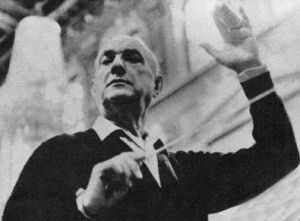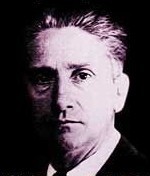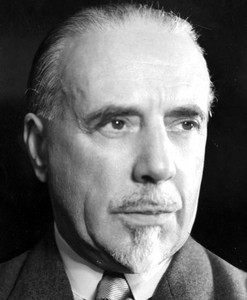
George Georgescu |
George Georgescu

Soviet listeners knew and loved the remarkable Romanian artist well – both as an outstanding interpreter of the classics, and as a passionate propagandist of modern music, primarily the music of his homeland, and as a great friend of our country. George Georgescu, starting from the thirties, repeatedly visited the USSR, first alone, and then with the Bucharest Philharmonic Orchestra he led. And each visit turned into a significant event in his artistic life. These events are still fresh in the memory of those who attended his concerts, who were captivated by his inspired rendering of the Second Symphony by Brahms, Beethoven’s Seventh, Khachaturian’s Second, poems by Richard Strauss, the filling of George Enescu’s works full of fire and sparkling colors. “In the work of this great master, a bright temperament is combined with accuracy and thoughtfulness of interpretations, with an excellent understanding and sense of the style and spirit of the work. Listening to a conductor, you feel that for him performance is always an artistic joy, always a truly creative act,” wrote composer V. Kryukov.
Georgescu was remembered in the same way by the audience of dozens of countries in Europe and America, where he performed with triumph for many decades. Berlin, Paris, Vienna, Moscow, Leningrad, Rome, Athens, New York, Prague, Warsaw – this is not a complete list of cities, performances in which brought George Georgescu fame as one of the greatest conductors of our century. Pablo Casals and Eugène d’Albert, Edwin Fischer and Walter Piseking, Wilhelm Kempf and Jacques Thiebaud, Enrico Mainardi and David Oietrach, Arthur Rubinstein and Clara Haskil are just some of the soloists who have performed with him around the world. But, of course, he was loved the most in his homeland – as a person who gives all his strength to the construction of the Romanian musical culture.
It seems all the more paradoxical today that his compatriots got to know Georgescu the conductor only after he had already taken a firm place on the European concert stage. It happened in 1920, when he first stood at the console in the Bucharest Ateneum hall. However, Georgescu appeared on the stage of the same hall ten years earlier, in October 1910. But then he was a young cellist, a graduate of the conservatory, the son of a modest customs official in the Danube port of Sulin. He was predicted a great future, and after graduating from the conservatory, he went to Berlin to improve with the famous Hugo Becker. Georgescu soon became a member of the famous Marto Quartet, won public recognition and the friendship of such musicians as R. Strauss, A. Nikish, F. Weingartner. However, such a brilliantly started career was tragically interrupted – an unsuccessful movement at one of the concerts, and the musician’s left hand forever lost the ability to control the strings.
The courageous artist began to look for new ways to art, to master with the help of friends, and above all Nikish, the mastery of orchestra management. In the year of the end of the First World War, he made his debut at the Berlin Philharmonic. The program includes Tchaikovsky’s Symphony No. XNUMX, Strauss’ Til Ulenspiegel, Grieg’s piano concerto. Thus began the rapid ascent to the heights of glory.
Shortly after his return to Bucharest, Georgescu occupies a prominent place in the musical life of his native city. He organizes the National Philharmonic, which he has been heading since then until his death. Here, year after year, new works by Enescu and other Romanian authors are heard, who see Georgescu as a perfect interpreter of his music, a faithful assistant and friend. Under his leadership and with his participation, Romanian symphonic music and orchestral performance reach world-class levels. Georgescu’s activities were especially wide-ranging during the years of people’s power. Not a single major musical undertaking was complete without his participation. He tirelessly learns new compositions, tours around different countries, contributes to the organization and holding of Enescu festivals and competitions in Bucharest.
The prosperity of national art was the highest goal to which George Georgescu devoted his strength and energy. And the current successes of Romanian music and musicians are the best monument to Georgescu, an artist and a patriot.
“Contemporary Conductors”, M. 1969.




